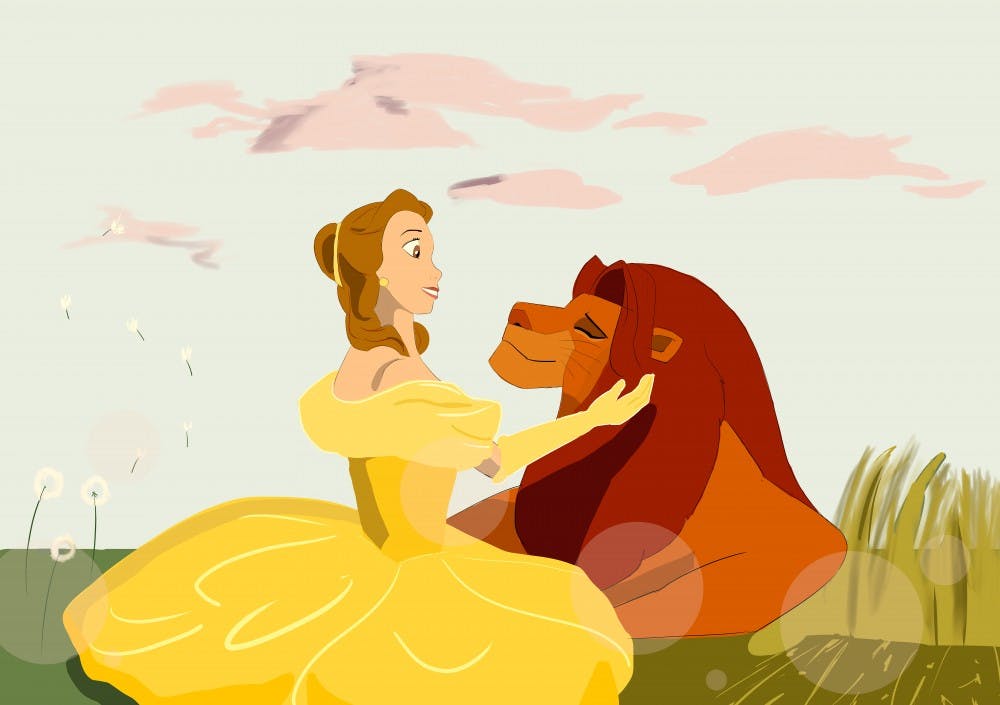If The Walt Disney Company had not already solidified itself as one of the most influential and culturally relevant media companies of all time, the buzz surrounding its streaming service, Disney+, has made us sure. Just a day after its release, they boasted over 10 million subscribers, and that number is only growing. The response to this new service, and the hundreds of movies and TV shows it contains, has been widespread and positive at every turn.
The reason for this is twofold: first, it introduces a way for all of Disney’s content—which many adults grew up with and consider important to their childhood—to be kept in one place, and second, it introduces new content on top of Disney's already extensive collection. High School Musical: The Musical: The Series is just one example—Lady and the Tramp has gotten a reboot with real dogs. Disney+ even got press for putting The Simpsons in its collection, because they apparently messed up its aspect ratio.
At first, it's surprising to see that Disney+’s release has received so much hype—most people do not get excited about the prospect of paying for another streaming service. Disney+’s $6.99/a month fee isn’t outrageous, though, and there's a growing idea that Netflix shouldn't monopolize digital content. That Disney+ has gotten so much positive press shows that now, Netflix isn’t the only streaming service in town.
While Hulu and Amazon Prime have certainly been competitors to Netflix, and have carved out names for themselves within the world of just–for–streaming television, Disney+ has something that they don't: nostalgia. These new Disney properties might be boring, rehashed versions of classics, but the point of these films is not to be well–made—it's to tap into our childhoods and get us to sign up. Despite its lukewarm critical reception, The Lion King’s 2019 reboot made over one billion dollars at the box office.
This can be a manipulative way to get people to buy into your content. Of course companies are going to try to get as much cash out of their consumers as they can, but repeatedly tapping into nostalgia is lazy. The fact that adults without children are purchasing Disney+ so that they can “relive their childhood” shows the degree to which nostalgia has played into their marketing—do we really want to rewatch Hannah Montana in 2019, or do we just think we want to for old time’s sake?
Additionally, a particular issue with Disney as a company is that people often seek to personify it and make it seem like the victim. In the Sony vs. Marvel debates about Tom Holland’s Spider–Man, Marvel—a company which Disney owns—was made to seem like the hapless, injured victim of Sony’s greed. In reality, Disney is a multibillion–dollar operation that does everything it can to make a profit—nothing more, nothing less.
Perhaps the excitement—rather than dread—in response to Disney+ has something to do with the fact that, above all else, people want to maximize efficiency when watching movies or television. Even though it’s very uncomplicated to pirate Peter Pan on the Internet and download an ad blocker, people seem to prefer to pay money to easily go back and access these movies. This has played perfectly into Disney’s marketing, and is responsible for at least a portion of its success.
Disney+ shows not only Disney’s prominence in the entertainment industry, but also a shift in streaming services. While there have been competitors to Netflix, the widespread positive response from the public shows that we might just begin a new era of streaming where every large media company has its own service, taking away some of Netflix's novelty.
How well all the other streaming services fare is still up in the air, but what's important is that Disney+ has made major waves in the entertainment industry, and the public is eating it up. Through all of this though, as you log in to watch an old Disney movie from your childhood, it's important to consider that the company has, in many ways, exploited your own nostalgia.

